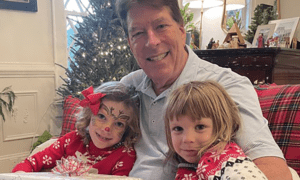My husband, many times, had written of death and created numerous dying scenes in the make-believe world of television. Once he had won an Emmy for it. But death in Hollywood is often different than the way it is truly delivered.
He had dropped me at the hospital door one afternoon so I could run up to say “hello” to a childhood friend whose husband was dying. Tears coursed down her still pretty face as she listened to his breaths and watched the roughed home-going trip he was making. It was the worst death rattle I had ever heard, a cross between water shivering in a half-empty glass and muffled air. Less than half an hour later, I plopped back down into the car seat and, sobered by what I had seen and heard, looked out the window for a moment before speaking.
“People don’t die in real life like they die on TV,” I said plaintively. “On TV, they die easy with a quiet sigh at best then their heads drop a bit dramatically. But in real life, most people die hard. They struggle and they rattle and sometimes they beg God for a reprieve or to call them more quickly than is his plan.”
“Funerals are pretty compared to death,” wrote Tennessee Williams in “Streetcar Named Desire.” “Funerals are quiet but death not always.”
He said not a word, absorbing carefully what I said. I looked at him. “Dying in real life is nothing like it is on television.” He nodded, no doubt thinking of all the lives he had ended for the sake of art or a good storyline. He wrote what he did not know intimately but he wrote beautifully and in the way that viewers prefer to see death.
My friend’s husband died shortly after I departed. She had said pitifully, “I just want it to be over. I can’t stand to see him suffer like this.” With one final, hacking effort at breath, his journey ended.
I suppose that before this modern era of medicine and the ability to ease people with medications and concoctions of sleeping ointments, that death was much rougher. Now, doctors are able to ease the passage into the next realm and that makes it easier for them as well as their loved ones.
It was by accident that Tink saw his first real dying scene and it was hard on him. So hard. I had gone visiting my precious friend in the hospital. Tink waited in the lobby until she insisted she wanted to see him and I insisted that he come. She was ill but nothing close to those Pearly Gates of which she had so often spoke.
Suddenly, something came upon her. Probably a cardiac arrest. We all flung into action, trying to make her as comfortable as possible. In a matter of moments, she fell into a tremendous state of suffering and we, who gathered, begged God to take her then and there. We did not pray for extra time. As the moment of danger passed, I glanced around to see Tink on the sofa, his elbows on his knees, his head dropped in tearful prayer.
My husband had finally seen death’s rallying cry and, later, he would admit that it had not been pretty. “You’re right,” he said, “It is not always pretty or soft when death comes calling.”
She quieted down and death backed away, only to return with full commitment the following day. By that time, she was sleeping quietly. She had said her goodbyes and told us all how much she loved us. With grace and dignity and the aid of medicines, she passed gently into the night.
She was a woman who taught sweetly many lessons in her life. And she did what no one else had ever done – she taught one of television’s best writers about the reality of death.
[Ronda Rich is the best-selling author of “There’s A Better Day A-Comin’.” Visit www.rondarich.com to sign up for her free weekly newsletter.]












Leave a Comment
You must be logged in to post a comment.